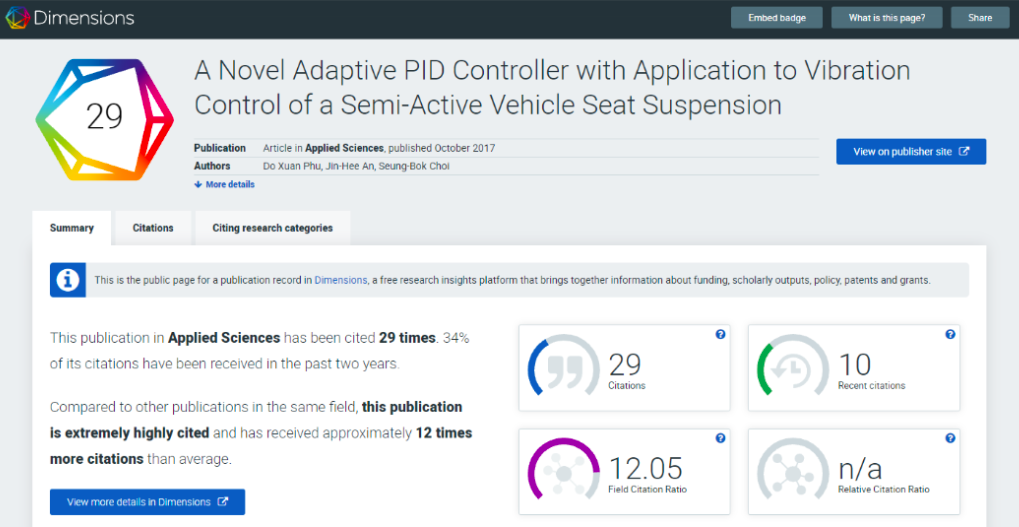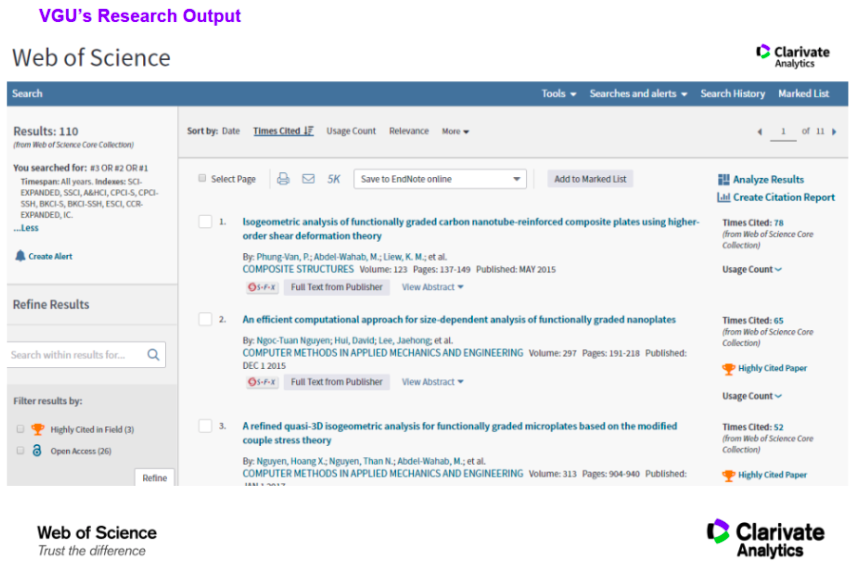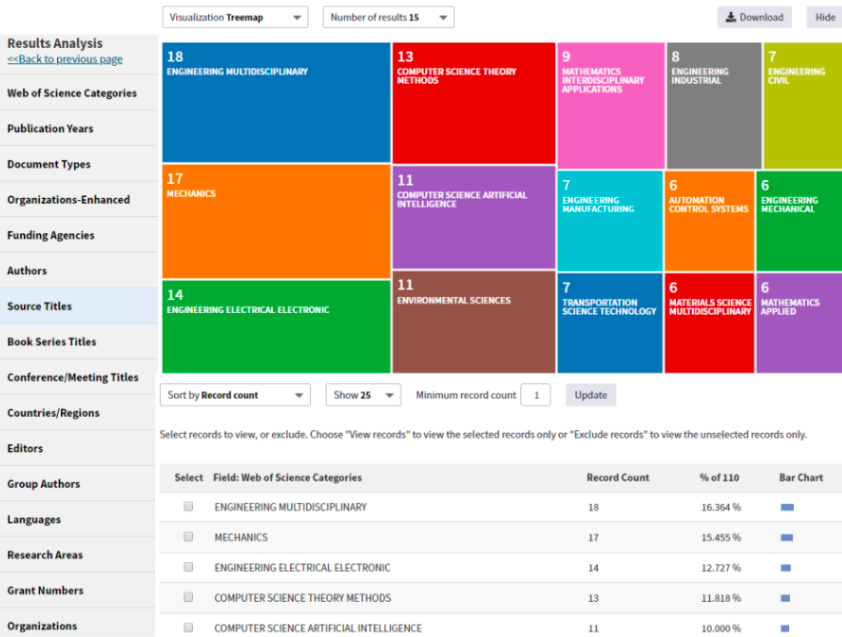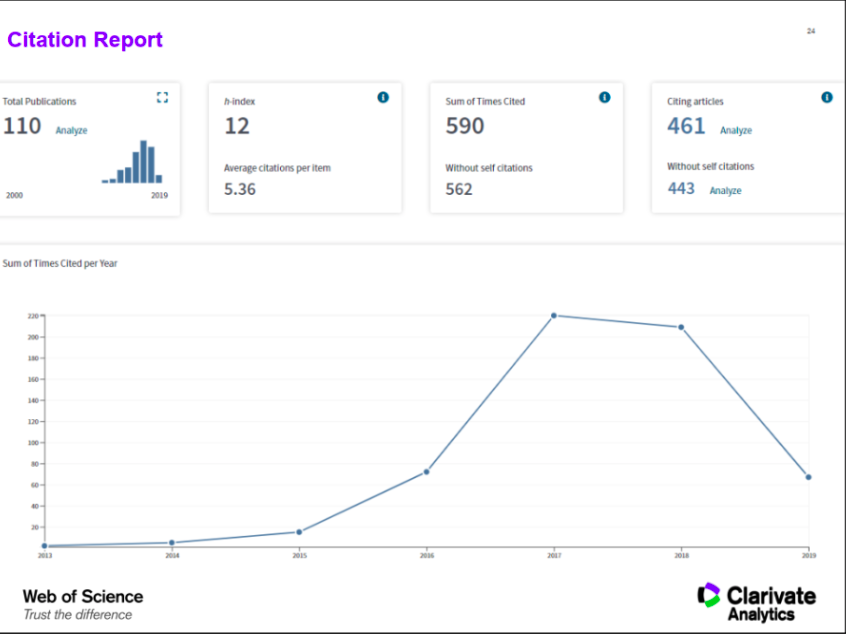Journal Impact Factor (JIF) is a metric used to evaluate the importance or prestige of a scientific journal. It is calculated by dividing the total number of citations received by articles published in the journal during a certain period of time (usually two years) by the total number of articles published in the same journal during that same period of time.
The JIF is frequently used by researchers, publishers, and institutions as a measure of the influence or impact of a journal in a particular field of research. Journals with high impact factors are considered to be more prestigious and influential, and publishing articles in such journals can be important for career advancement and obtaining funding. However, it is important to note that the JIF has been criticized for its limitations and potential biases, and should not be used as the sole indicator of the quality of a journal or its articles.
The Journal Impact refers to the measure of a journal’s importance or influence within its field of research. There are several types of Journal Impact measures that are commonly used:
Journal Impact Factor (JIF): JIF is a metric calculated by Clarivate Analytics that measures the average number of citations received per article published in a particular journal over a two-year period. JIF is widely used to rank journals in a particular field, and journals with higher JIFs are generally considered to be more prestigious.
The Eigenfactor Score is another metric that is used to measure the influence of a journal. The calculation is based on the number of times, in the past five years, that articles from a journal have been cited in the Journal Citation Reports (JCR). Citations from highly ranked journals are weighted more than citations from poorly ranked journals.
Journal Citation Reports video from Clarivate
SJR is a metric that takes into account not only the number of citations a journal receives, but also the prestige of the journals that cite it. It uses a weighted citation index that assigns more weight to citations from highly ranked journals. It is a portal that includes the journals and country scientific indicators developed from the information contained in the Scopus database.
CiteScore is a metric developed by Elsevier that measures the average number of citations received per document published in a particular journal over a three-year period.
CiteScore metrics deliver greater insight into research impact and influence. Calculated using data from Scopus, CiteScore metrics help you evaluate journals, book series, conference proceedings and trade journals to empower well-informed decisions.
Google Scholar Metrics is a tool provided by Google Scholar that allows researchers and academics to view the impact and visibility of scholarly publications. It uses various metrics such as the h-index, the i10-index, and the citation count to measure the influence and relevance of scholarly articles.
The h-index is a metric that reflects both the productivity and impact of a researcher or author. It is defined as the highest number h of a researcher’s papers that have received at least h citations. For example, an author with an h-index of 10 has published 10 papers that have each been cited at least 10 times.
The i10-index is another metric that measures the number of publications by an author that have received at least 10 citations.
Google Scholar Metrics also provides a list of the most cited publications in various fields and languages, as well as the most cited authors in specific subject areas. This information can be useful for researchers and academics who want to identify influential publications and researchers in their field.
Google Scholar lists the top 100 publications in several languages, ordered by their five-year h-index and h-median metrics. To see which articles in a publication were cited the most and who cited them, click on its h-index number to view the articles as well as the citations underlying the metrics.
Scopus is a source-neutral abstract and citation database. It delivers reliable insights underpinned by curated, comprehensive and linked scholarly content and profiles. Scopus is a comprehensive database of scientific, technical, medical, and social science research literature, produced by the publishing company Elsevier. Scopus indexes and abstracts peer-reviewed literature from over 25,000 journals, as well as conference proceedings, trade publications, and book series.
Scopus offers tools to track, analyze, and visualize research output and impact, such as citation analysis, author profiles, and h-index calculations. It is used by researchers, students, and practitioners in academia, industry, and government to discover and evaluate scholarly literature and to assess research trends and impact.
How can we use Scopus Source Feature
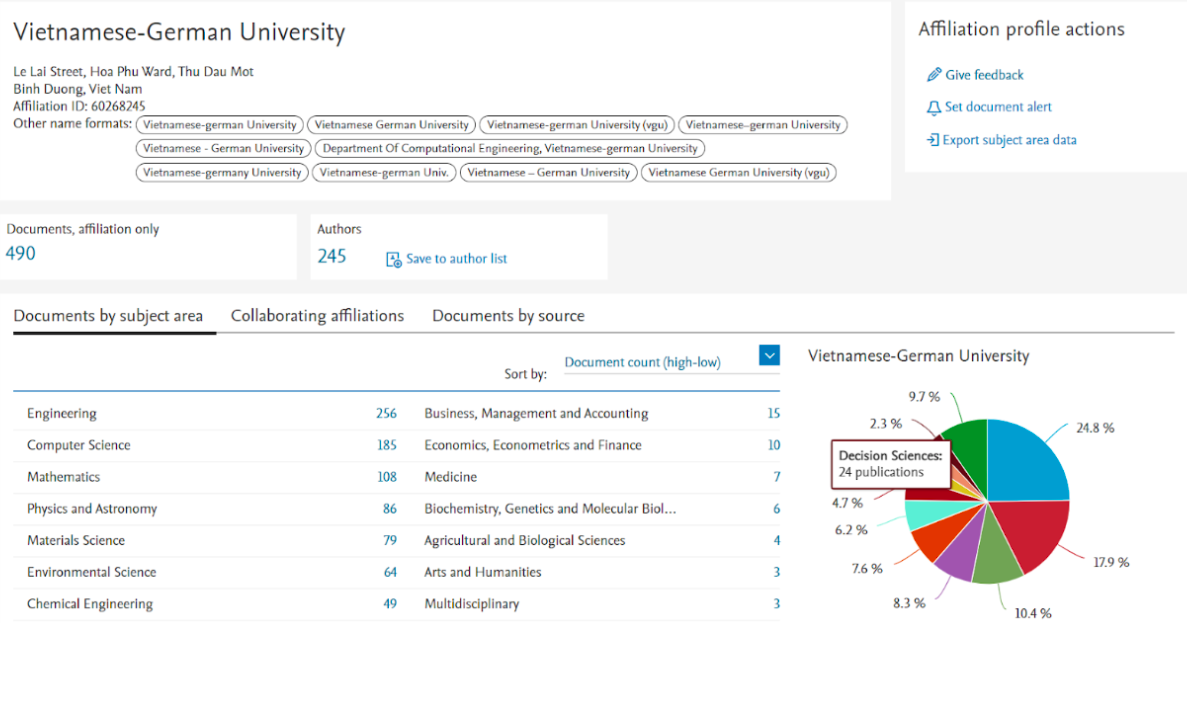
Affiliation search from Scopus
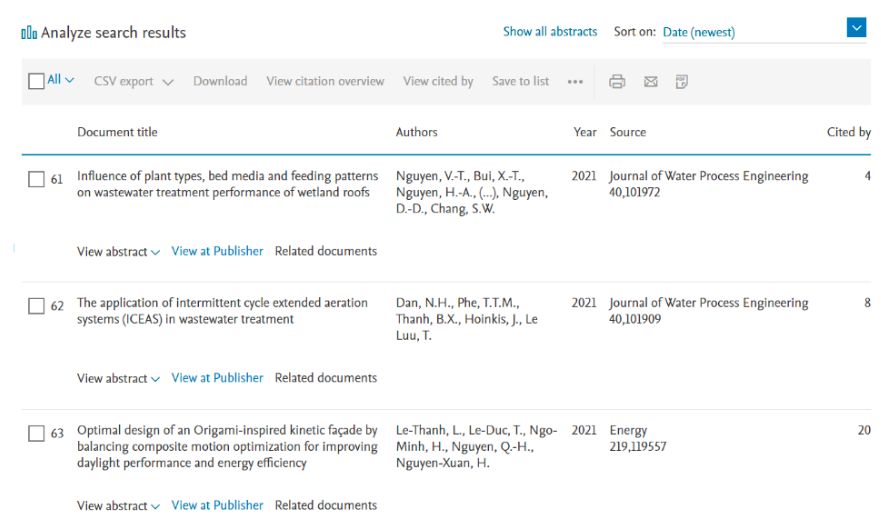
Citation count
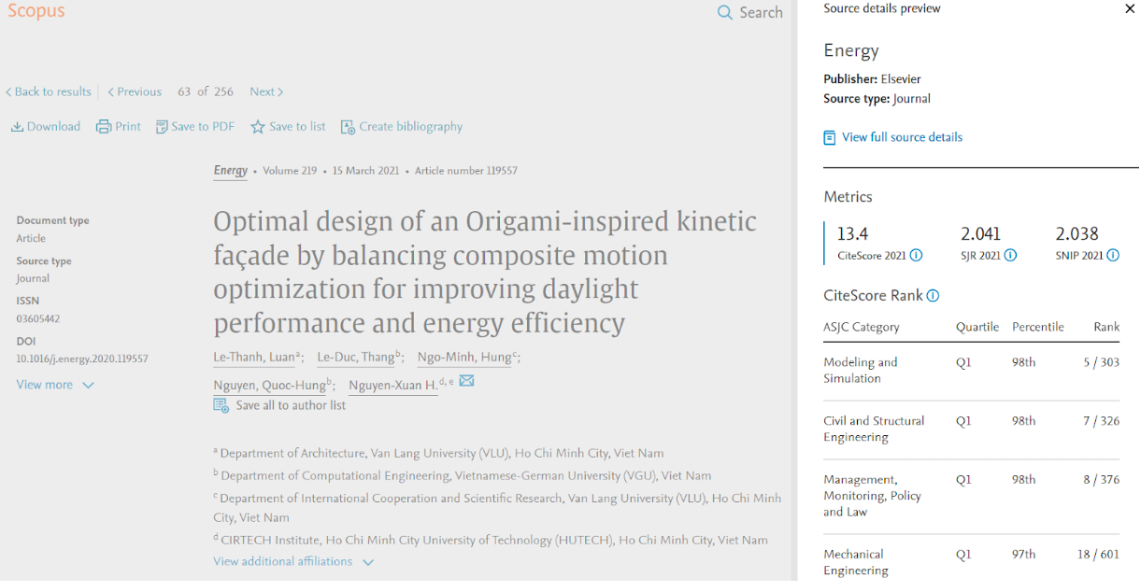
Journal metrics
What is Field-weighted Citation Impact (FWCI)?
The following guideline obtained from Scopus database
Field-Weighted Citation Impact is the ratio of the total citations actually received by the denominator output and the total citations expected based on the average of the subject field. Refer to the Snowball Metrics Recipe Book for detailed information.
Field-Weighted Citation Impact is sourced directly from SciVal. The data in SciVal is updated every week. SciVal makes a copy of the Scopus database and then structures it to optimally support its metrics and functionality. This means that SciVal data may be slightly behind Scopus in its data currency.
A Field-Weighted Citation Impact of:
Exactly 1 means that the output performs just as expected for the global average.
More than 1 means that the output is more cited than expected according to the global average. For example, 1.48 means 48% more cited than expected.
Less than 1 means that the output is cited less than expected according to the global average.
Field-Weighted Citation Impact takes into account the differences in research behaviour across disciplines. It is particularly useful for a denominator that combines a number of different fields, although it can be applied to any denominator:
Researchers working in fields such as medicine and biochemistry typically produce more output with more co-authors and longer reference lists than researchers working in fields such as mathematics and education; this is a reflection of research culture, and not performance.
In a denominator comprising multiple disciplines, the effects of outputs in medicine and biochemistry dominate the effects of those in mathematics and education.
This means that using non-weighted metrics, an institution that is focused on medicine will appear to perform better than an institution that specialises in social sciences.
The methodology of Field-Weighted Citation Impact accounts for these disciplinary differences.
The Web of Science is a research database that provides access to a comprehensive collection of academic and scholarly literature, including journal articles, conference proceedings, books, and patents. It is produced by Clarivate Analytics and was originally created by the Institute for Scientific Information (ISI).
The database covers a wide range of academic disciplines, including science, social science, arts, and humanities. It includes citation data, allowing researchers to track the impact of individual articles or authors, as well as to identify emerging trends and potential collaborators. The Web of Science is widely used by researchers, librarians, and other professionals to conduct literature reviews, analyze citation patterns, and identify key contributors to a particular field or topic.
Here are some features you’ll find on WoS:
Get more impact with Almetrics
Altmetrics refers to the alternative metrics used to measure the impact of research outputs beyond traditional citation counts. It includes data gathered from sources such as social media, news articles, blogs, and other online platforms. Altmetrics can be useful in measuring the reach and impact of research outputs and can provide a more comprehensive understanding of their impact.
How to use Almetrics?
Understand the basics: Start by understanding what altmetrics are and how they differ from traditional metrics such as citations. Altmetrics measure the online attention and engagement of research outputs and can include metrics such as social media shares, downloads, and views.
Choose the right tool: There are several altmetrics tools available, such as Altmetric, PlumX, and ImpactStory. Choose the one that best fits your needs and budget. Some tools are free, while others require a subscription.
Identify the research outputs to track: Altmetrics can be used to track various research outputs, such as journal articles, preprints, datasets, and software. Identify the outputs you want to track and ensure they are indexed by the altmetrics tool you choose.
Interpret the metrics: Altmetrics provide a wealth of data, but it is important to interpret them in context. For example, a high number of social media shares does not necessarily indicate quality research.
Use altmetrics to complement traditional metrics: Altmetrics should not replace traditional metrics such as citations but can be used to provide a more complete picture of the impact and visibility of research outputs.
Keep up with the latest developments: Altmetrics are a rapidly evolving field, and new metrics and tools are being developed. Stay up-to-date with the latest developments to ensure you are using the most effective methods to measure the impact of research outputs.
There are several types of altmetrics, including:
Usage-based metrics: These metrics measure the number of times a research output has been viewed, downloaded, or accessed online.
Citation-based metrics: These metrics measure the number of times a research output has been cited in other scholarly publications.
Social media metrics: These metrics measure the online activity around a research output, such as tweets, shares, likes, and comments on social media platforms like Twitter, Facebook, and LinkedIn.
News media metrics: These metrics measure the coverage of a research output in news media outlets, such as online news sites, newspapers, and magazines.
Reference manager metrics: These metrics measure the number of times a research output has been saved, bookmarked, or added to a reference manager tool, such as Mendeley or Zotero.
Sympathetic mentions: These metrics measure the positive feedback from the general public about research output, such as blog posts or press releases.
Using free tool: Almetrics Bookmarklet
Almetrics integrated into Research Repository via Dspace Cris
